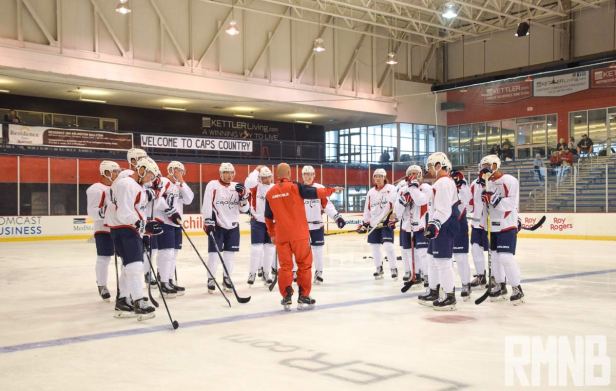I’m not sure how many fans understand how truly difficult it is to play in the National Hockey League. Everyone probably understands how difficult it is to get to the NHL, with competition beginning when players are 7-year olds and moving forward.
But the life of an NHL player is something to behold. It is not nearly as glamorous as one would think or belief. It is a lifestyle, at least through the hockey season, of hockey, hockey, and more hockey.
I first got a glimpse of this when I used to go to the Kettler Center in Virginia to watch the Washington Capitals practice. My organization, the Educational Policy Institute, had an office kitty-corner to Kettler, so we would check out the practice schedule and sometimes run over at 11am to watch Ovechkin, Backstrom, and the boys throw some pucks around.

That’s when I understood how much these guys skate and practice. Every day. With a few exceptions of days off, NHL players skate every day, and on game days skate twice. Some practices are optional due to injuries, bruises, or just wear and tear, but most players skate during most of the practices. It’s what they do.
From mid-September until the start of April, every NHL player is skating every day with the exception of perhaps eight days during that entire span. That is about eight months of constant hockey. And now, players are often playing in summer leagues to keep their endurance, strength, and skills up to pro-speed for training camp.
Why?
Because they understand that they are expendable and everyone is replaceable in the NHL, the KHL, and every other professional league. There is a lot of talent out there and the best play in the NHL. So, even if you, or me, deride players some times because they aren’t playing well enough, it is important to remember that these players were, at some level, the cream of a very expansive (and expensive?) crop that took years to cultivate. To remain within the analogy, NHL players are the GMOs of hockey. They are created by coaches and advisors to be better. They eat differently. They run their day differently. And they train almost constantly. Players will often get on the cycle for up to 30 minutes after games to get rid of the lactic acid in their system.
Once players are in the professional hockey vortex, their life changes dramatically. At that point, they are told what to eat and how to take care of themselves. Hockey rules hwo they live. For pro players who do not subscribe to this regiment, they typically do not last long at the pro level. Because they are replaceable. So almost all NHLers follow the rules. They do what they are told to, and likely do more because no one wants to be replaced.
For a good read on the daily life of an NHL player, read this story from 1995. It provides a great perspective on hockey life with the NHL. http://www.hockeyplayer.com/2010/10/the-pro-schedule-2/.

